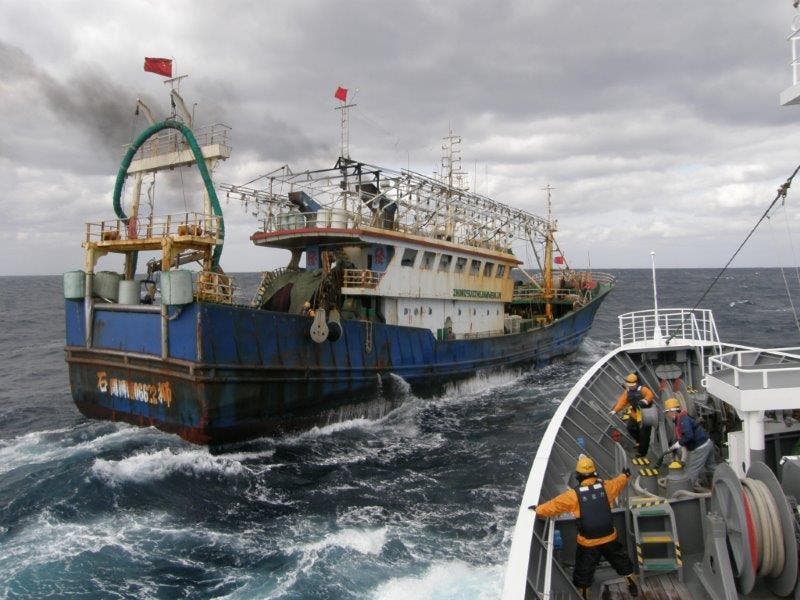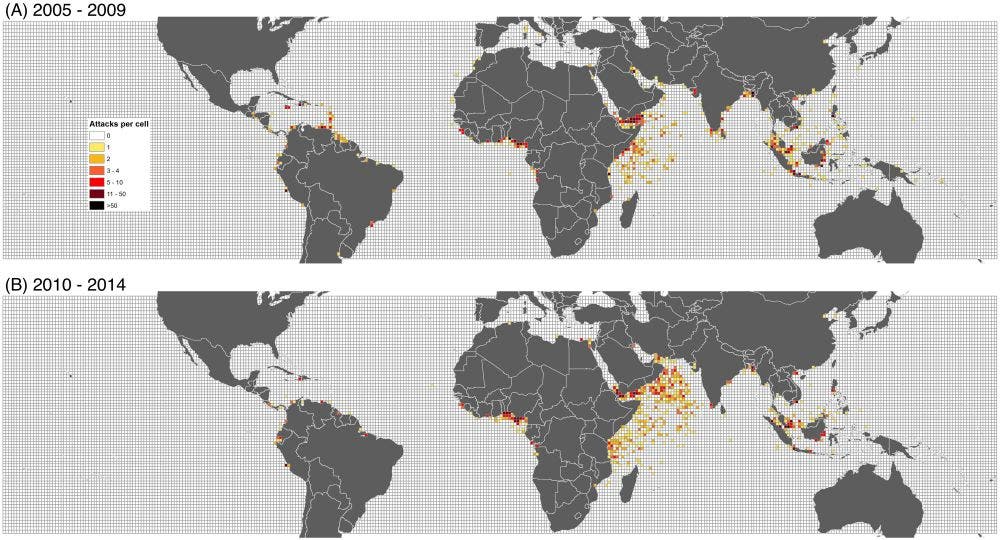A new study finds that pirate attacks occur more frequently in areas where destructive or illegal fishing practices happen, and enforcing sustainable fishing practices could eliminate the incentive for piracy.

人事院.In the broadest sense, piracy is any violent or predatory act committed by the crew or the passengers of a ship on the high seas. It’s a problem many may not even be aware of, is still a bane in some parts of the world, and it’s not just a local problem — it has international consequences as well.
“Negative global impacts consist of increasing the costs of (and therefore deterring) international maritime trade through loss of cargo, higher protection or insurance costs, re-routings, ransoms, etc. Locally, piracy can exacerbate corruption, lawlessness, and overall criminal activity including drug smuggling, human trafficking, etc.,” says lead author Raj Desai in an email to ZME Science.
Piracy is strongly associated with weak governance. When regulation is either missing or ineffective, it favors the creation of pirate groups. Enforcing laws on the high seas is never an easy task, but for developing countries with limited resources, it’s an even tougher challenge.
In the new study, Desai and George Shambaugh of Georgetown University in Washington, D.C. found that piracy is linked to something else: illegal or harmful fishing practices.
“Weak governance and state fragility definitely create a favorable environment for piracy, particularly if that weakness leads to poorly enforcement within territorial waters. However, we find that harmful and illegal fishing practices–in particular, practices that lead to high bycatch or that are habitat-destroying–exert a first-order, independent effect on the likelihood of piracy.”
The researchers suspected some potential connection between small-scale fishers and piracy. It makes sense: for them, harmful and illegal fishing (often conducted by foreign industrial fishing fleets) can be a direct threat to their livelihoods leading them down the road of piracy, says Desai.
“Indeed, the species that artisanal fisheries rely upon are often species that are part of the “bycatch” from industrial fishing. Moreover, small-scale fisheries are a major source of employment and income to coastal (and sometimes even inland) communities already facing vulnerabilities due to, e.g., climate change. “
“In addition, fishermen have skills valued by pirate gangs. Consequently, fishers may themselves turn to piracy both to smooth income losses and to deter foreign fleets.”

Sea Mafia
To put their hypothesis to the test, the researchers divided the world’s oceans into 1 degree-by-1 degree cells, looking at links between illegal fishing practices and piracy incidents between 2005 and 2014. Their analysis also accounted for the increased likelihood of piracy in some locations due to proximity to areas already experiencing piracy.
While establishing a causal relationship is difficult, there does seem to be a link between illegal or harmful fishing practices and piracy. Greater incidence of piracy was associated unreported and unregulated fishing, but not with coastal drought or population density.
It is reasonable that, threatened by illegal industrial fishing, small-scale fishers take to piracy to defend their livelihoods. This bears some similarities to other, land-based practices, where illegal practices spur other reactive illegal practices (such as the Mafia). Whether or not this is actually lucrative for fishers is not clear at this point.
“As with all illegal activities, piracy can also increase the wealth in areas that benefit from pirates fencing their goods or distributing rents. Opinion is divided with respect to how much pirates engage in “Robin Hood”-like behavior and, at present, we do not have much information on the microeconomics of maritime piracy. However there is some evidence that Somali piracy may have boosted economies in certain coastal areas. Moreover, piracy may also function–similar to the Mafia–as a substitute for state enforcement of fishing rights, where actual state enforcement is weak or missing.”
Breaking the pattern
The problem, just like with the Mafia, is that the appeal of the practice is clear — if your livelihood is threatened by illegal vessels and no one comes in to help, the appeal of a local pirate force can become appealing. If fishermen are turning to piracy to deter foreign fleets then if we truly want to reduce piracy, addressing illegal fishing seems like a good way to go about things. Regulating illegal fishing is a good first step, but hardly enough.
“Most bilateral and multilateral efforts have focused principally on anti-piracy enforcement measures, namely interdiction. For example, the Southern African Development Community’s maritime security strategy is heavily focused on increasing naval presence, joint patrols, military exercises, and surveillance. This is certainly vital, but much more should be done. Additionally, more livelihoods-focused efforts in vulnerable coastal communities is required.”
“What is often missing from these efforts is some integrated approach to limiting the appeal of piracy—by policing illegal, unreported, or unregulated fishing, as well as destructive practices that can deplete fish stocks.”
Desai recalls that something similar happened in Somalia. Somali piracy has essentially accomplished its purpose: driving away foreign fishing fleets. Similar trends were observed in other parts of Africa. But after piracy dropped and fish stocks recovered, foreign fleets returned, which led to an uptick in piracy.
“This suggests that piracy will likely be a cyclical phenomenon unless the pattern can be broken,” Desai concludes.
Journal Reference: Desai RM, Shambaugh GE (2021) Measuring the global impact of destructive and illegal fishing on maritime piracy: A spatial analysis. PLoS ONE 16(2): e0246835.
https://doi.org/10.1371/journal.pone.0246835






